Disclosure: This article contains affiliate links. We may earn a commission from purchases at no extra cost to you, which helps our travel content.
The cacophony of Kinshasa hit me like a physical force as I stepped out of N'djili International Airport. A sea of eager taxi drivers, the persistent drone of motorbikes, and the palpable energy of 17 million souls navigating Central Africa's largest metropolis. As someone who has traversed the colonial remnants of four continents, I thought I was prepared for Kinshasa's transportation labyrinth. I was gloriously, humblingly wrong. This city—a fascinating amalgamation of Belgian colonial infrastructure, vibrant Congolese innovation, and barely controlled chaos—demands a transportation strategy unlike any other urban space I've encountered. Whether you're researching colonial archives as I initially was, or simply seeking to understand this pulsating heart of Central African culture, how you navigate Kinshasa will define your experience in the Democratic Republic of Congo's capital.
Airport Arrival: Your First Congolese Negotiation
N'djili International Airport (FIH) serves as your gateway to Kinshasa, though 'gateway' suggests more order than you'll find. After collecting your luggage—a process that can take anywhere from 30 minutes to several hours—you'll face your first transportation challenge.
Upon exiting the terminal, prepare for an onslaught of offers from taxi drivers. The key here is confidence and pre-planning. I had arranged for my hotel to send a driver, which I highly recommend. If that's not possible, negotiate firmly with official airport taxis (yellow with airport logos) before entering any vehicle. Expect to pay around $30-40 USD for the 25km journey to central Kinshasa.
During my research visit last autumn, I made the rookie mistake of not confirming my hotel pickup clearly enough. After 30 minutes of waiting and increasingly creative hand gestures with various drivers claiming to be 'my' driver, I retreated to the airport's small café to regroup. There, I connected to Wi-Fi using my portable hotspot, which proved invaluable throughout my stay when local networks became unreliable. After confirming details with my hotel, the actual driver appeared, and my Kinshasa adventure properly began.
The drive from N'djili to central Kinshasa offers your first glimpse of Congo's vibrant street life, though after a long flight, the bumper-to-bumper traffic and seemingly lawless driving patterns can be overwhelming. Consider it your initiation.
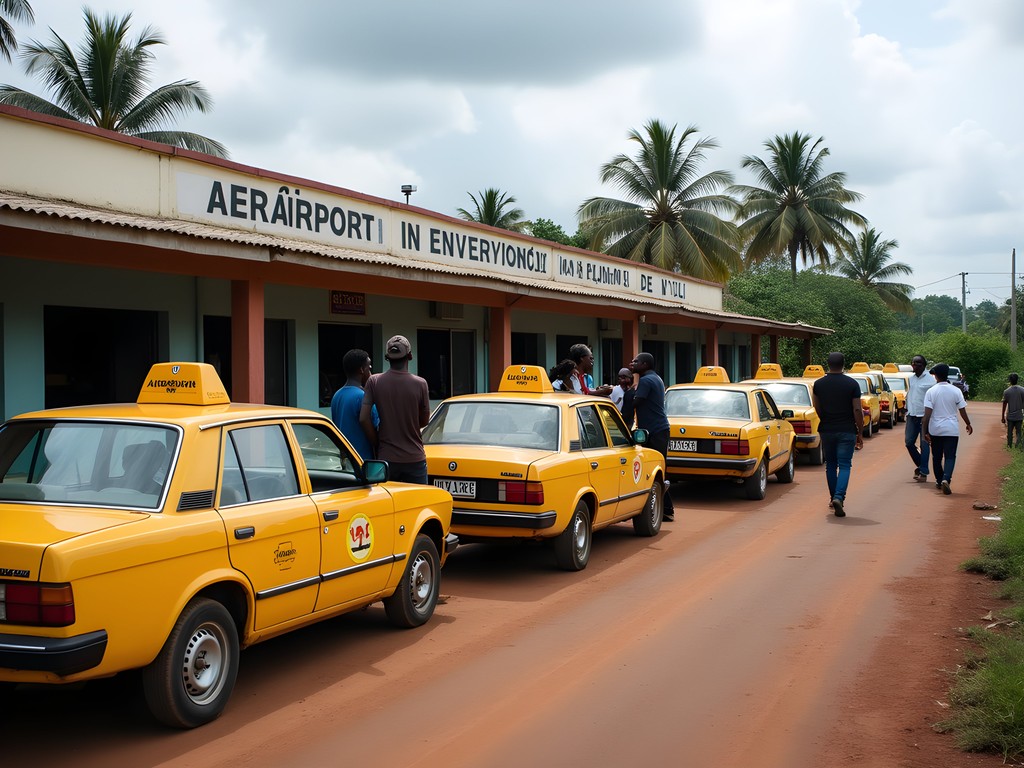
💡 Pro Tips
- Pre-arrange airport pickup through your accommodation if possible
- Only use official yellow airport taxis if arranging your own transport
- Have your destination written down in French to avoid miscommunication
- Keep small USD bills for payment (clean, newer bills only)
Taxis Jaunes & Taxi-Bus: The Backbone of Kinshasa Transit
Once in Kinshasa proper, you'll encounter two primary public transportation options: the ubiquitous yellow taxis (taxis jaunes) and the more adventurous shared minibuses known locally as 'taxi-bus' or 'fula-fula.'
The taxis jaunes are actually shared taxis operating on fixed routes, much like bus lines. These aging Toyotas and Peugeots—often defying mechanical logic by continuing to function—follow main thoroughfares, with passengers hopping on and off along the way. The fare is typically 500-1000 Congolese Francs (CF) per segment (roughly $0.25-0.50 USD).
During my second day in Kinshasa, I needed to visit the National Archives near Gombe district. My hotel concierge explained the taxi route, but neglected to mention the complex hand signal system used to indicate destinations. After three taxis passed me by, a kind local woman demonstrated the proper gesture—a pointing motion with two fingers extended downward. Within minutes, a taxi jaune screeched to a halt, and I joined five other passengers for a journey that cost me less than a dollar but provided priceless cultural immersion.
The taxi-buses are more chaotic but equally essential to Kinshasa life. These minivans, packed well beyond any reasonable capacity estimate, offer the cheapest transportation option. A 'call boy' hangs from the open door, shouting destinations and collecting fares. While intimidating at first, I found these to be fascinating microcosms of Kinshasa society, where market women, office workers, and students all share a momentary community.
Both options require basic French phrases and an adventurous spirit. I tracked my routes using my offline navigation app, which allowed me to download detailed Kinshasa maps before arrival—essential when network connectivity becomes spotty in certain districts.
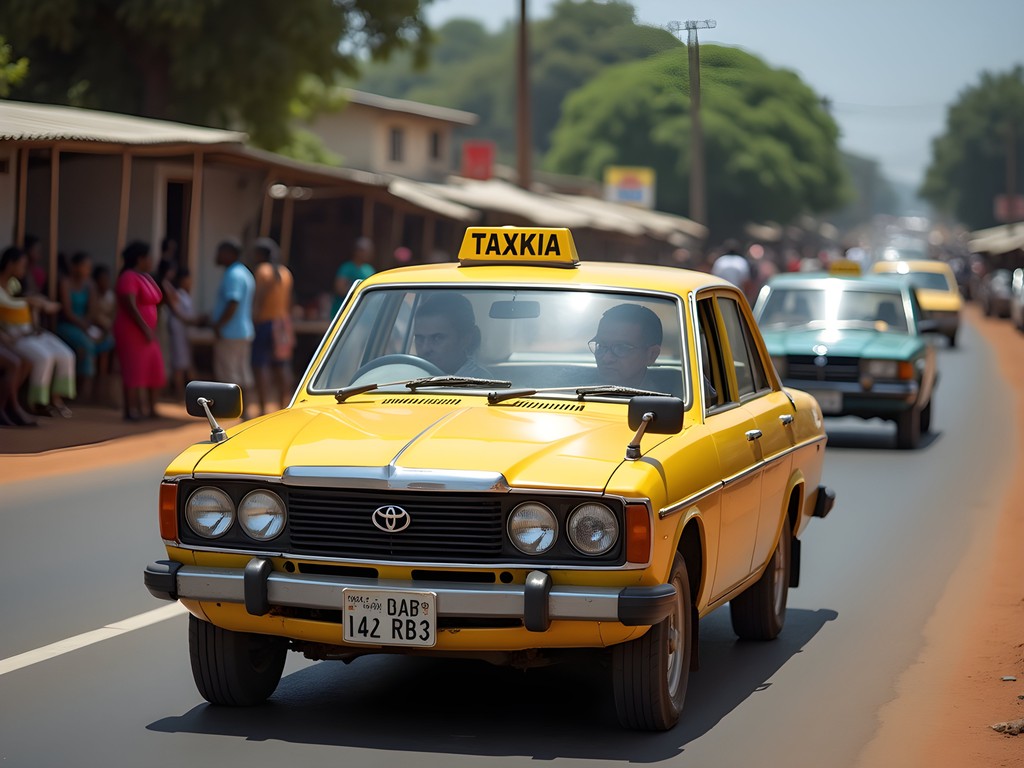
💡 Pro Tips
- Learn basic directional hand signals for hailing shared taxis
- Have small Congolese Franc notes ready for payment
- Ask locals about current taxi prices to avoid tourist markups
- For taxi-buses, listen for the call boy shouting your destination
Wewa & Moto-Taxis: For the Adventurous Traveler
For those seeking more direct transportation—or when you inevitably find yourself in a part of Kinshasa where taxis jaunes don't frequent—you'll encounter two options that require a bit more courage: private taxis (often called 'wewa') and motorcycle taxis ('moto-taxis').
Wewa taxis function like traditional taxis elsewhere, taking you directly to your destination for a negotiated fare. Unlike the yellow shared taxis, these come in various colors and conditions. Always negotiate before entering, and expect to pay 5,000-10,000 CF ($2.50-$5) for short trips within central districts. Longer journeys or trips during Kinshasa's notorious traffic jams will cost considerably more.
During my research visit to the University of Kinshasa, located some distance from the city center, I found myself relying on wewa taxis frequently. One particularly memorable driver—a former history teacher named Pascal—provided impromptu lectures on Belgian colonial architecture as we navigated the city. These unexpected connections are the silver lining to Kinshasa's transportation challenges.
Moto-taxis represent the fastest—though arguably most harrowing—way to navigate Kinshasa's traffic. These motorcycle drivers, identifiable by their numbered vests, weave through congestion with alarming skill. While I initially avoided them, a time-sensitive meeting at the National Museum forced my hand. Clutching my anti-theft daypack (which proved essential for protecting camera equipment and research materials throughout my trip), I experienced fifteen minutes of exhilarating terror as my driver navigated spaces between vehicles I wouldn't have thought possible.
If you opt for moto-taxis, always request a helmet (though don't be surprised if one isn't available), negotiate firmly, and keep your belongings secure. A typical moto ride costs 2,000-3,000 CF ($1-$1.50) for short distances.
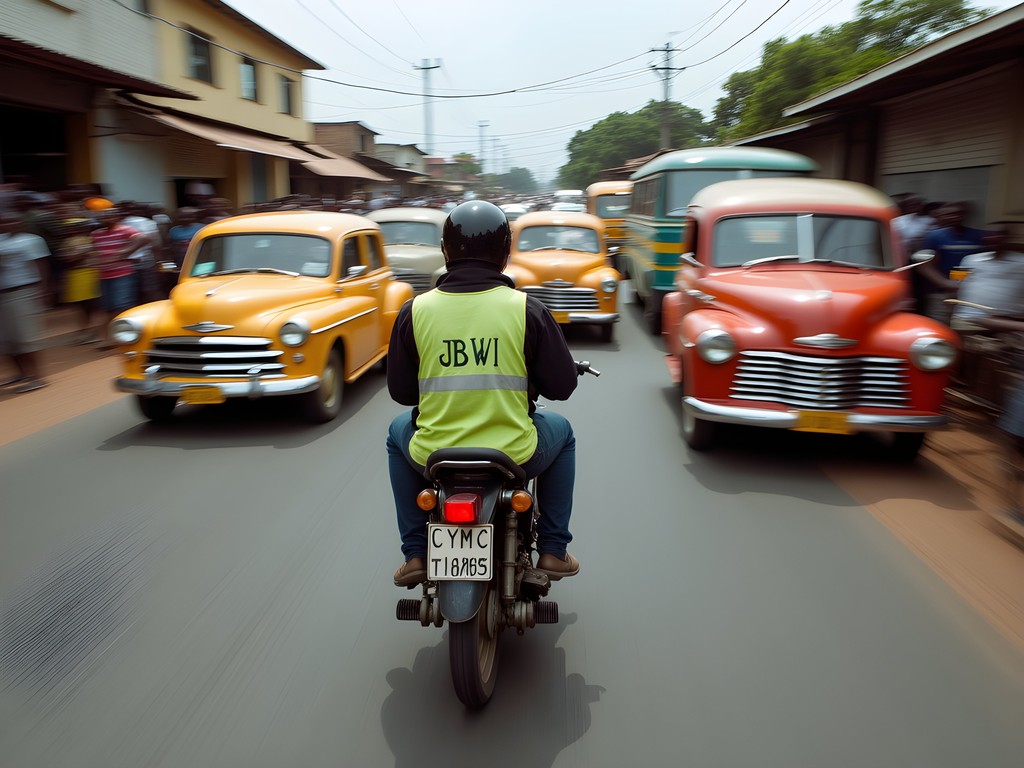
💡 Pro Tips
- Always agree on wewa taxi prices before entering the vehicle
- For safety, share your location with someone when using moto-taxis
- Keep valuables secure in anti-theft bags when using any open transportation
- Ask your accommodation for reliable wewa taxi driver contacts
River Transportation: The Congo River Alternative
One of Kinshasa's most overlooked transportation options is also its most historically significant. The mighty Congo River—which separates Kinshasa from its smaller sister city Brazzaville in the Republic of Congo—offers a fascinating alternative to road transportation.
Regular ferry services connect the two capitals (the closest capital cities in the world besides Rome and Vatican City), making for an excellent day trip. The official ferry, known as 'le bateau,' departs from Beach Ngobila in Kinshasa's La Gombe district. A one-way crossing costs around $25 USD, and you'll need your passport as you're technically crossing an international border.
During my visit, I dedicated a day to this river crossing, not merely for the novelty but as part of my research into colonial transportation networks. The contrast between the slow river journey and Kinshasa's frenetic road traffic provides a poignant reminder of how transportation shapes cultural development. As we crossed the wide expanse of muddy water, I couldn't help but reflect on Joseph Conrad's problematic yet historically significant 'Heart of Darkness' and how this very waterway shaped colonial perceptions of Central Africa.
For shorter journeys along Kinshasa's riverfront, smaller wooden boats called 'pirogues' offer inexpensive transportation between riverside neighborhoods. These traditional vessels have transported Congolese people for centuries and provide a glimpse into pre-colonial transportation methods that persist alongside modern options.
If you're planning any river transportation, a quality dry bag is essential for protecting electronics and documents. The combination of water spray and tropical downpours makes waterproofing non-negotiable, particularly during the rainy season when sudden storms can appear with little warning.
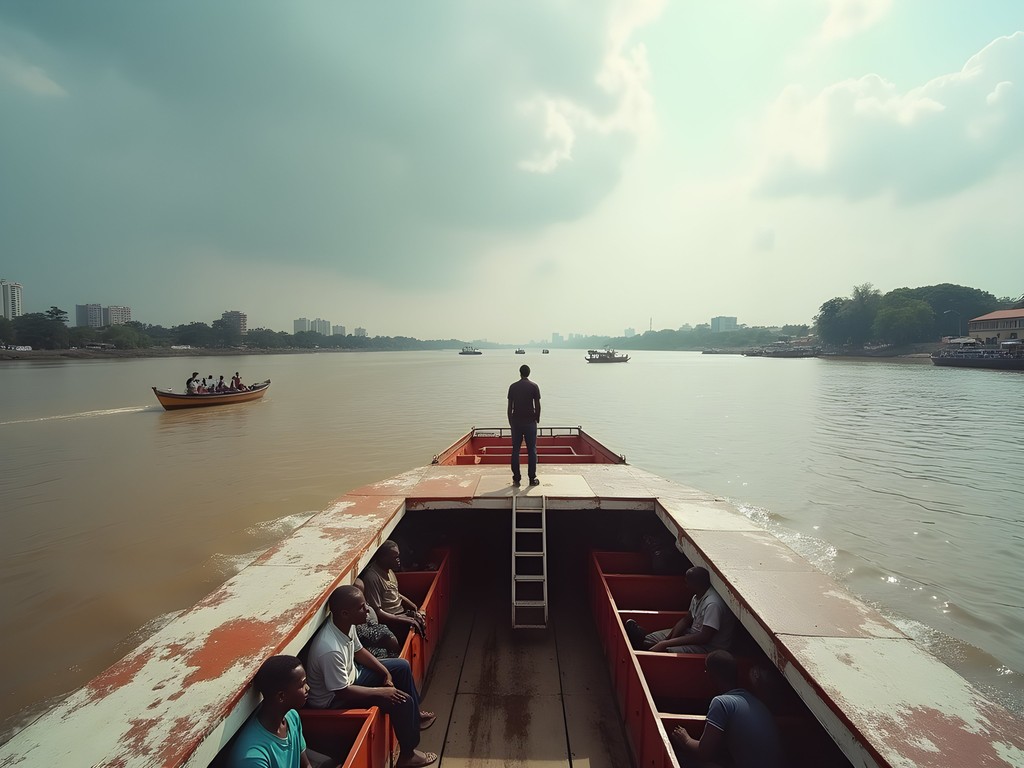
💡 Pro Tips
- Bring your passport for ferry crossings to Brazzaville
- Check ferry schedules the day before as they change frequently
- Arrive at least an hour before departure to navigate border formalities
- For pirogue journeys, negotiate prices with multiple operators
Walking Kinshasa: When, Where, and How
Despite Kinshasa's reputation for transportation chaos, walking remains viable in certain districts—with important caveats. The central business district of Gombe, with its wide boulevards and colonial-era architecture, offers the most pedestrian-friendly environment. Here, you'll find embassies, government buildings, and upscale hotels along relatively well-maintained sidewalks.
During my week-long stay, I established a morning ritual of walking through Gombe's tree-lined avenues before the day's heat intensified. These walks provided invaluable context for my research into colonial urban planning while offering glimpses of daily life impossible to observe from a moving vehicle.
Beyond Gombe, walking becomes more challenging. Sidewalks disappear, drainage issues create obstacles during rainy season, and security concerns increase in certain neighborhoods. I found that walking with purpose, dressing modestly, and avoiding ostentatious displays of wealth or technology minimized unwanted attention.
Kinshasa's intense heat and humidity make comfortable footwear essential. My lightweight hiking shoes proved ideal for navigating uneven terrain while providing enough ventilation for the tropical climate. During sudden downpours, which occur regularly during rainy season, these quick-drying shoes prevented the foot discomfort that can quickly derail exploration plans.
Navigating on foot also revealed Kinshasa's remarkable linguistic landscape. While French serves as the official language, Lingala dominates street conversations. Learning basic Lingala greetings—'Mbote' (hello) and 'Matondo' (thank you)—earned smiles and often transformed potentially challenging interactions into friendly exchanges.
When walking after dark, which I generally avoided except in well-lit areas near my hotel, I found that hiring a local guide was worth the modest expense. My guide Maurice, arranged through my hotel, provided not just security but cultural context that enriched my understanding of Kinshasa's complex transportation ecosystem.
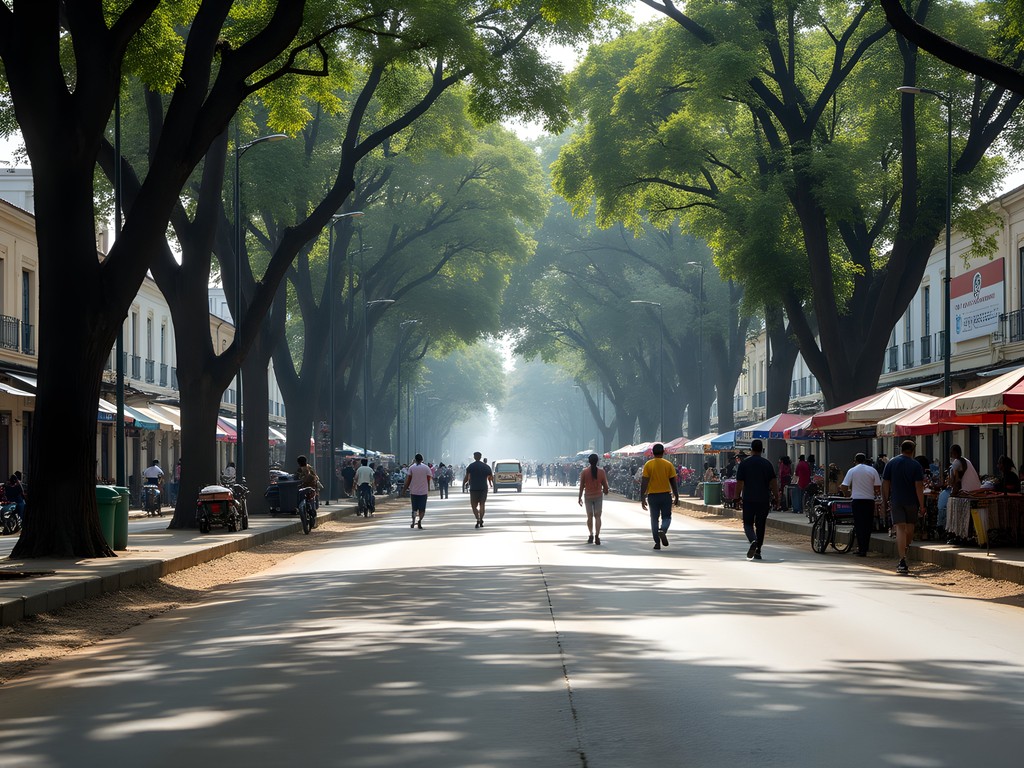
💡 Pro Tips
- Walk only in daylight hours in well-populated areas
- Carry minimal valuables and use anti-theft bags
- Learn basic Lingala greetings to establish rapport
- Consider hiring a local guide for longer walking explorations
Final Thoughts
Navigating Kinshasa is not merely about moving from point A to B—it's an immersion into the complex social fabric of Central Africa's largest metropolis. Each transportation choice reveals different layers of this fascinating city, from colonial legacies visible in the grid-like streets of Gombe to the innovative adaptations of taxi-bus routes serving neighborhoods never included in Belgian urban plans. As a researcher accustomed to finding narratives in unexpected places, Kinshasa's transportation system itself became one of my most valuable primary sources. The city demands flexibility, patience, and a willingness to embrace uncertainty—qualities that reward the adventurous traveler with authentic connections impossible in more predictable environments. Whether you're researching, working, or simply exploring, approach Kinshasa's transportation challenges as opportunities for deeper cultural understanding. The stories you'll collect while navigating this remarkable city will likely become the souvenirs you treasure most.
✨ Key Takeaways
- Pre-arrange airport transportation whenever possible
- Learn basic French and Lingala phrases for negotiating transport
- Combine different transportation modes based on time of day, distance, and comfort level
- Always negotiate fares before beginning any journey
- Carry small denominations of both Congolese Francs and clean USD bills
📋 Practical Information
Best Time to Visit
year-round (dry season May-September easiest for transportation)
Budget Estimate
$30-50 USD daily for transportation
Recommended Duration
minimum 1 week
Difficulty Level
Challenging
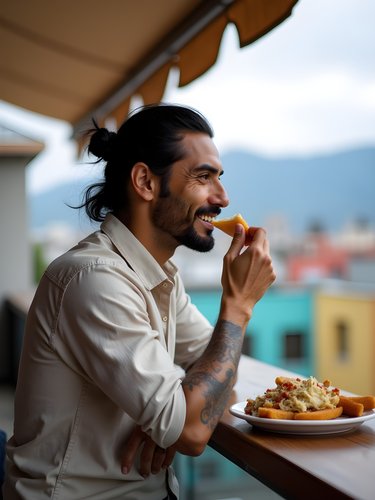
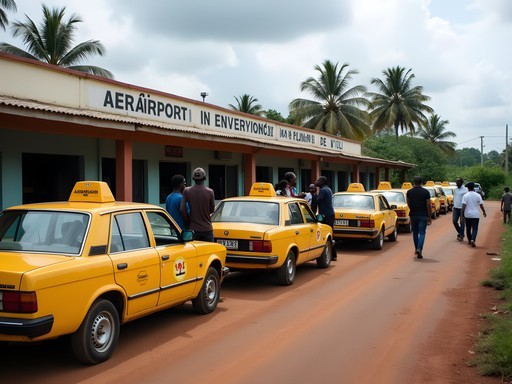
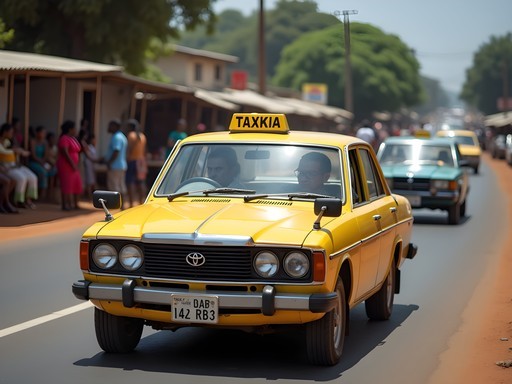
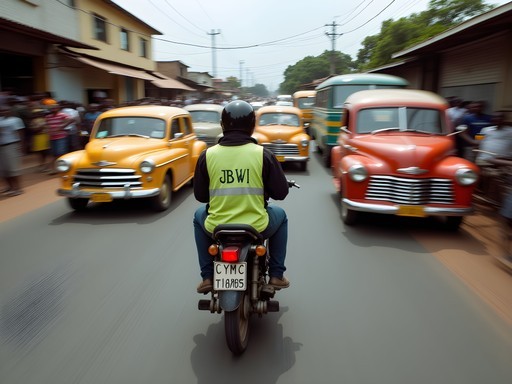

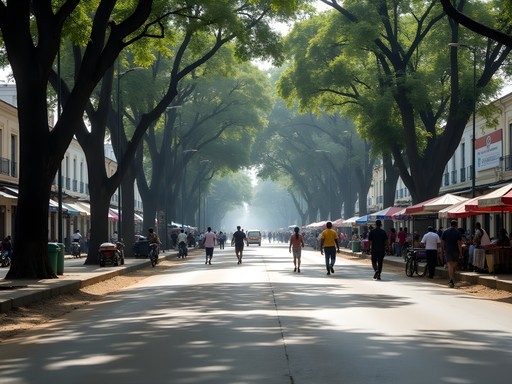










Comments
photohero
Great post! How did you handle taking photos while using public transportation? I'm always nervous about having my camera out in unfamiliar cities, especially ones with reputation for petty crime.
Lucas Jones
Great question! I was selective about when and where I took out my camera. For most street scenes, I used my phone which attracts less attention. When using my DSLR, I kept it in a nondescript bag and only took it out when I felt comfortable. Having a local guide with me for the first few days also helped gauge appropriate photo moments.
skybuddy
Just booked my tickets to Kinshasa for next month! This guide couldn't have come at a better time! SO EXCITED!!
Lucas Jones
Perfect timing! Feel free to reach out if you have any questions before your trip. You're going to have an amazing experience!
Mason Sullivan
Man, this brings back memories! My first day in Kinshasa was a complete disaster - I ignored all the advice about pre-arranging airport pickup and ended up paying $50 for what should've been a $15 ride. The driver saw me coming a mile away! But by the end of my two weeks there, I was confidently cramming into taxi-buses with the locals, haggling in broken French, and even braved a moto-taxi during rush hour (never again - thought my life was over when we squeezed between two moving trucks!). The river ferry to Brazzaville was actually my favorite transportation experience - such a unique perspective of both cities. For budget travelers, those taxi-buses Lucas mentioned are absolutely the way to go once you get comfortable with the routes. Just bring small bills and don't be shy about asking locals which one you need!
Lucas Jones
That moto-taxi between trucks story made me sweat just reading it! Glad you survived to tell the tale, Mason. The river crossing is magical, isn't it?
Hunter Thompson
MATE! This post is pure gold! Just got back from Kinshasa last month and everything you've written is spot on! Those taxi-bus rides were the highlight of my trip - absolutely mental but SO AUTHENTIC! Ended up making friends with this cool local dude who showed me how to use the hand signals for different destinations. The river taxi to Brazzaville was epic too - gives you this crazy perspective seeing both capitals facing each other across the water. For anyone heading there, bring a bandana or mask for the dust on moto rides. My lungs thanked me!
skybuddy
Those hand signals confused me so much! Kept getting dropped off in random places until I figured it out lol
Savannah Torres
This guide is spot on! When we visited with our kids last summer, we found that having small denominations of USD (crisp bills only) and Congolese francs was essential for smooth taxi negotiations. Also, for families, I'd recommend downloading offline maps before arrival - cell service can be spotty and having your hotel's location marked helps when communicating with drivers who may speak limited English. The kids actually loved the organized chaos of Kinshasa's transport - it became part of the adventure rather than something to fear!
journeymood
Thanks for the tip about offline maps! Did you find it easy to get around with kids? I'm considering bringing my nephew.
Savannah Torres
It's definitely manageable with kids but I'd recommend taxis over moto-taxis for children. Our kids actually loved watching the bustling street life from the taxi windows - it was like a moving cultural experience for them!
Douglas Bradley
Excellent guide, Lucas! I spent three weeks in Kinshasa last year and your transportation breakdown is spot-on. One thing I'd add for travelers: always negotiate taxi fares BEFORE getting in, and having small denominations of Congolese francs ready makes everything smoother. I found learning a few phrases in Lingala opened so many doors - especially when trying to navigate the chaotic taxi-bus system. The locals really appreciated the effort! Also, for safety, I used anti-theft daypack which was perfect for navigating crowded areas without worrying about pickpockets. The river journey to Brazzaville was definitely a highlight of my trip - much more peaceful than city transportation!
photowalker
What Lingala phrases did you find most useful? I'm planning to go back next year!
Douglas Bradley
"Mbote" (hello), "Matóndo" (thank you), and "Wapi...?" (Where is...?) were my go-to phrases. Also learning numbers for negotiating prices was super helpful!
photowalker
Wow, this brings back memories! Those yellow taxis are quite the experience 😅
Douglas Bradley
Right? I found the taxi-bus system fascinating too. Did you try the river transportation options Lucas mentioned?
photowalker
No, I was too nervous about the river options! Stuck to the taxis mostly. Those moto-taxis were scary enough for me!
roamhero
Those moto-taxis look terrifying but fun! Not sure I'd be brave enough lol
adventureguide
Pro tip for anyone heading to Kinshasa: download maps offline before you go! Cell service can be spotty and having your route mapped out helps when trying to direct taxi drivers or check if your moto is going the right way. Also, keep small bills handy for taxis - they never seem to have change.
Mason Ferrari
Having traversed Kinshasa multiple times over the past decade, I can attest to the accuracy of your transportation assessment. The evolution of the taxi system there is fascinating - from the traditional 'taxi jaunes' to the emerging app-based services. One critical aspect travelers should note is the stark difference between daytime and nighttime transportation safety protocols. After 9pm, I exclusively use pre-arranged transportation with drivers I've established relationships with. The river transportation section was particularly insightful - the juxtaposition between commercial ferries and local pirogues represents the economic stratification of the city itself. Well documented, Lucas.
photohero
Is it really that dangerous at night? I'm planning a photography trip and was hoping to capture some night scenes of the city.
Mason Ferrari
I wouldn't say it's inherently dangerous if you take proper precautions. Night photography is possible but I'd recommend hiring a trusted local guide/driver for evening excursions. The travel security pouch has been invaluable during my night movements in Kinshasa.
Venture X
Premium card with 2X miles, $300 travel credit, Priority Pass